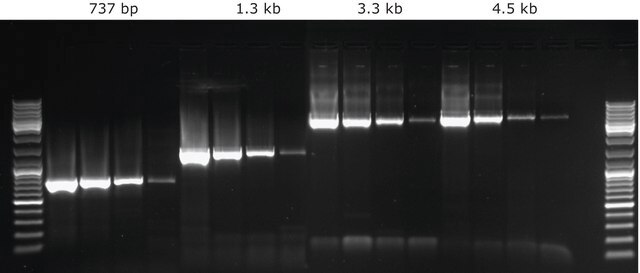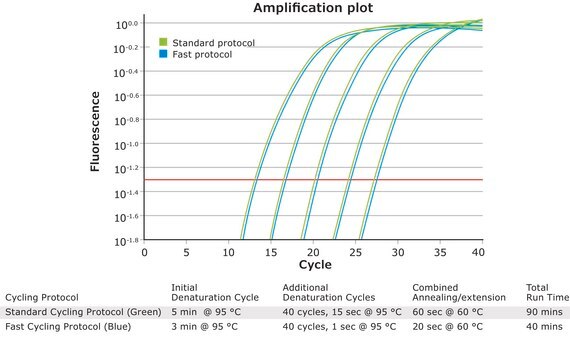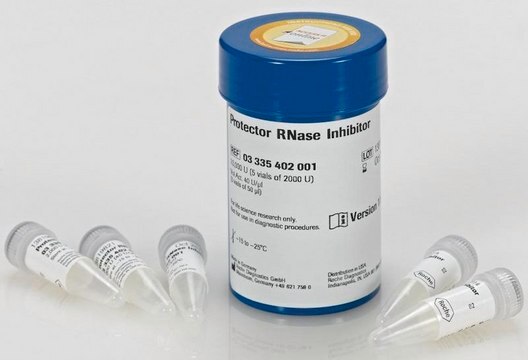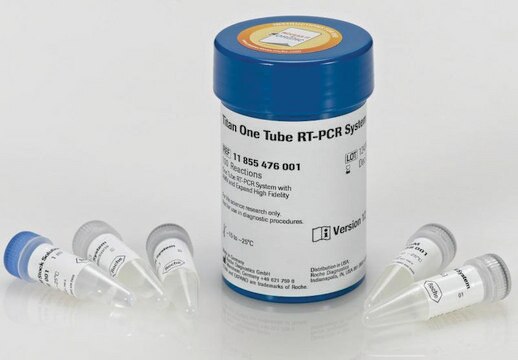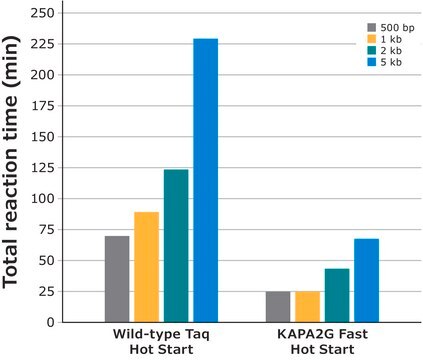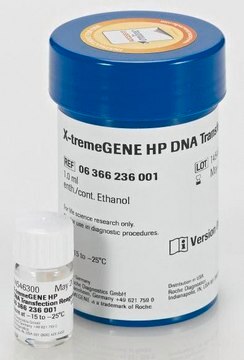MABN2465
Anti-nonphospho-Ser9/21 GSK3β/α Antibody, clone 15C2
clone 15C2, from mouse
Synonym(e):
Glycogen synthase kinase-3 beta/alpha, EC: 2.7.11.26, EC 2.7.11.26, GSK-3 beta/alpha, Serine/threonine-protein kinase GSK3B/alpha
About This Item
Empfohlene Produkte
Biologische Quelle
mouse
Qualitätsniveau
Antikörperform
purified immunoglobulin
Antikörper-Produkttyp
primary antibodies
Klon
15C2, monoclonal
Speziesreaktivität
human, mouse, rat
Verpackung
antibody small pack of 25 μL
Methode(n)
immunocytochemistry: suitable
immunohistochemistry: suitable (paraffin)
immunoprecipitation (IP): suitable
western blot: suitable
Isotyp
IgG1κ
NCBI-Hinterlegungsnummer
UniProt-Hinterlegungsnummer
Versandbedingung
ambient
Posttranslationale Modifikation Target
phosphorylation (non-phospho-Ser9/Ser21)
Angaben zum Gen
human ... GSK3B(2932)
Verwandte Kategorien
Allgemeine Beschreibung
Spezifität
Immunogen
Anwendung
Neurowissenschaft
Immunohistochemistry Analysis: A 1:50 dilution from a representative lot detected nonphospho-Ser9/21 GSK3 / in human cerebral cortex and rat cerebral cortex tissues.
Immunoprecipitation Analysis: A representative lot detected nonphospho-Ser9/21 GSK3 / in Immunoprecipitation applications (Grabinski, T., et. al. (2016). Front Mol Neurosci. 9:123).
Western Blotting Analysis: A representative lot detected nonphospho-Ser9/21 GSK3 / in Western Blotting applications (Grabinski, T., et. al. (2016). Front Mol Neurosci. 9:123).
Immunocytochemistry Analysis: A representative lot detected nonphospho-Ser9/21 GSK3 / in Immunocytochemistry applications (Grabinski, T., et. al. (2016). Front Mol Neurosci. 9:123).
Immunohistochemistry Analysis: A representative lot detected nonphospho-Ser9/21 GSK3 / in Immunohistochemistry applications (Grabinski, T., et. al. (2016). Front Mol Neurosci. 9:123).
Qualität
Western Blotting Analysis: A 1:500 dilution of this antibody detected nonphospho-Ser9/21 GSK3 beta/alpha in 10 µg of rat brain tissue lysate.
Zielbeschreibung
Physikalische Form
Lagerung und Haltbarkeit
Sonstige Hinweise
Haftungsausschluss
Not finding the right product?
Try our Produkt-Auswahlhilfe.
WGK
WGK 1
Flammpunkt (°F)
does not flash
Flammpunkt (°C)
does not flash
Analysenzertifikate (COA)
Suchen Sie nach Analysenzertifikate (COA), indem Sie die Lot-/Chargennummer des Produkts eingeben. Lot- und Chargennummern sind auf dem Produktetikett hinter den Wörtern ‘Lot’ oder ‘Batch’ (Lot oder Charge) zu finden.
Besitzen Sie dieses Produkt bereits?
In der Dokumentenbibliothek finden Sie die Dokumentation zu den Produkten, die Sie kürzlich erworben haben.
Unser Team von Wissenschaftlern verfügt über Erfahrung in allen Forschungsbereichen einschließlich Life Science, Materialwissenschaften, chemischer Synthese, Chromatographie, Analytik und vielen mehr..
Setzen Sie sich mit dem technischen Dienst in Verbindung.